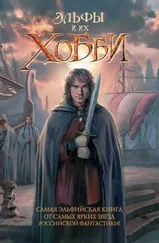But the French military soufflé soon deflated under the weight of British reality when they said only twelve thousand French troops would actually arrive and then only in mid-April. The Finns fell back to earth. They never called for the aid. In January, as both sides paused on the ground, the Soviets picked up the pace in the air war. Despite an overwhelming numerical advantage, the Soviets achieved little from their air forces and — this is getting monotonous — got mauled by the Finns. When the war started, the Finns had only forty-eight fighter planes, few of them modern. But they tore through the Soviets and attacked using their tactic of two pairs of two planes called “finger four,” which outmaneuvered the Soviet planes flying in a single formation of three. By the war’s end they had shot down 240 Soviet aircraft with a Finnish loss of only 26. Overall, including ground fire, the Soviets lost eight hundred planes in the war, about eight per day. For these losses, the Soviets actually succeeded in blowing up lots of snow and killing thousands of trees. They also managed on rare occasions to actually hit Finnish people and buildings.
Meanwhile, back on the ground, the Soviet divisions fattened up for the kill again, but the Finns were now running low on shells. While Stalin altered his tactics somewhat, he refused to give up one key negotiating point: if the truce talks failed, he would endure endless casualties to achieve victory. On February 1 the Soviets opened with massive artillery and aerial bombardments, the largest yet in military history. The bombing stunned even the stoic Finns. As usual, the Soviets surged forward in tight waves. Then they died in tight waves. The Finns continued to fight furiously, despite being bombed out of their bunkers. The Soviets simply ground down the Finns and forced them to expend their ammunition into the chests of the hapless Russians. Thousands fell in each assault with second and third waves climbing over their frozen comrades. At one point twenty-five hundred Russians died in less than four hours.
Then on February 11, the Soviets moved up eighteen fresh divisions. But the Finns held firm. Back and forth the fighting swirled, the exhausted Finns never breaking. Finally, on February 15, after the Soviets punched a hole in the resistance, Mannerheim ordered part of his line to retreat to their second layer of defenses. The Soviets pushed on. On February 28, Mannerheim withdrew to the final line of defense. As the diplomats dickered and the French made their empty promises, the Russians hammered the rear line with a total of thirty divisions. By March 10 the Finnish army was down to half its prewar strength. The rear line consisted of sporadic pockets of Finns taking on huge numbers of Russian tanks and troops. They were fighting on fumes, but still fighting.
MOLOTOV COCKTAIL
The Molotov cocktail has been the weapon of choice for revolutionaries and angry youth throughout the world. While the gasoline-filled bottle with the flaming rag has held a key place in many a soldier’s arsenal, few armies got better use from it as the Finns against the Soviets. Although it was invented by troops under Spanish dictator Francisco Franco during the Spanish Civil War in the 1930s, the Finns perfected it and honored Soviet foreign minister Vyacheslav Molotov by naming it after him. During the Winter War, the Finns found the homemade weapons so effective they created a factory to mass-produce them. More than half a million were eventually turned out with an improved design that no longer required a flaming rag. Instead, a capsule of sulfuric acid was used to ignite the flammable liquid in the bottle as it shattered against another Soviet tank.
On March 8 the Finns met the Soviets in Moscow, ready to sign away their battlefield victories. It was a typical brutal Soviet negotiation: sign or keep fighting. The Finns pushed their points. But the Soviets sat in stony silence: sign or keep fighting. The Finns got Stalined. Soviet foreign minister Molotov presented the Finns with the agreement, which had harsher terms than they had previously discussed. Stalined again. Facing a total breakdown of their army, the Finns had no choice but to sign the agreement, handing Stalin his territory. Just before the Finns signed the surrender, the French and British both announced they would help Finland if they kept fighting. The Finns could only shake their heads at the pathetic little men in London and Paris.
In an act of revenge, fifteen minutes before the cease-fire was to begin on March 13, the Soviets opened up with a massive artillery bombardment. Stalined a third time.
The Soviets got their land, so in a limited sense they won the war. But enough victories like this can destroy a country. The Russians suffered about 250,000 dead and a similar number of wounded. The Finns had about 25,000 dead, a ratio of ten Russians per Finn. The Finnish wounded amounted to about 43,000. In a one-hundred-day war, that was solely a sideshow as 2,500 Russians died each day. They suffered so many casualties that after the war a Russian general grimly joked that they had won “just enough land to bury our dead.”
The biathlon became an Olympic sport in 1960. A Finn grabbed the silver medal, just beating out an opponent from — guess where — the Soviet Union. And he didn’t even have to shoot him.
The spectacle of the little Finns bravely fighting the Russian bear fascinated the world. World leaders delivered outraged tongue-lashings at the evildoing Russians with the level of indignity rising in direct relation to their distance from the action.
In a bizarre twist, Stalin’s paranoid delusion about Finnish aggression turned true as the Finns joined hands with the Nazis in 1941 and invaded the Soviet Union, with Mannerheim once again leading the army. Mannerheim refused to advance beyond the 1939 border, and the fighting quickly stalled. Teaming with the Nazis destroyed the good will that Finland built with the West — and it was from then on treated like a friend of Hitler’s. By 1944 Stalin’s troops were once again pushing back the Finns, and Mannerheim became president of Finland. He negotiated a peace with the Russians and fought to rid the country of Germans. He resigned in ill health in 1946 and retired to write his memoirs in Switzerland. For decades thereafter Finland lived under the heavy hand of the Soviets, who kept a keen eye on their neighbor.
While the massive casualties suffered in the war did impress upon Stalin the need to reform his army, the biggest impact was to let Hitler know that the once-feared Red Army was beatable. Hitler mocked Stalin by privately offering to subdue the Finns. Hitler no longer feared the Russians.
Stalin led the Soviets through the war that killed some 20 million Russians and, to everyone’s relief, died in 1953.
TEN.
ROMANIA FIGHTS BOTH SIDES IN WORLD WAR II: 1941
Choosing the wrong friends can lead to unpaid loans, unpleasant dinner parties, and possible jail time. In a war, choosing the wrong friends can be much, much worse.
On the eve of World War II Romania faced a decision of who to befriend. In a spasm of nationalist doltishness, Romania joined hands with the Nazis in the hope that Hitler would hand them the gift of Transylvania, their ancestral homeland.
To achieve this goal and make Adolf happy, Romania’s Hitler-wannabe dictator Ion Antonescu decided to attack Russia, the largest and only undefeated country on earth. As Ion would painfully learn, any war plan based on the idea of making Hitler full of smiles and puppy love needs a thorough reevaluation.
But taking a moment to reflect on this decision apparently never occurred to the Romanian strongman. His decision led little Romania to eventually duke it out with the United States, Great Britain, the Soviet Union, and Germany, all in the same war. Romania fought so hard and inflicted so much damage to its allies and/or enemies that when the war ended, no one knew how to treat it. The West abandoned Romania and left it to rot under Soviet control for decades.
Читать дальше












